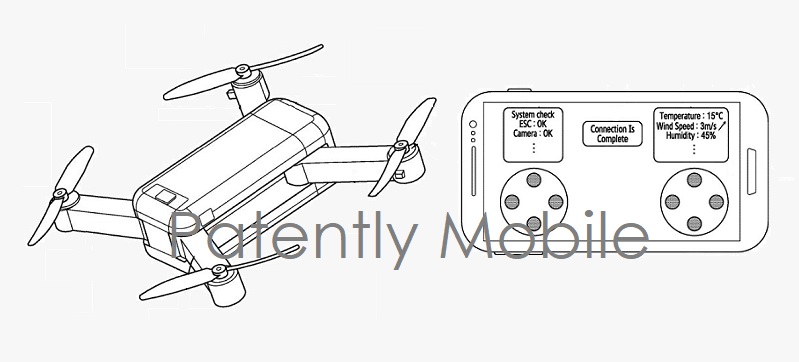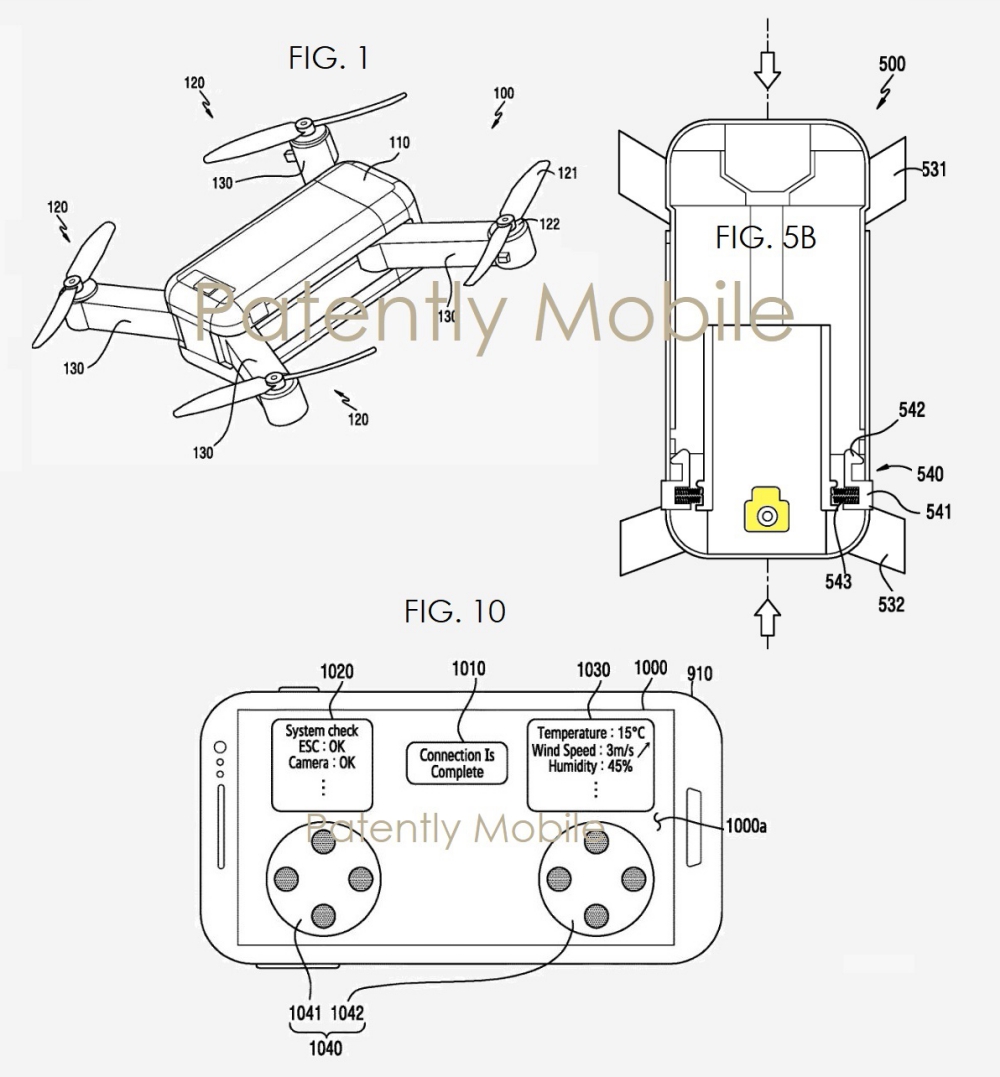This has certainly been the year of the drone for Samsung who has been granted four design patents (01, 02 and 03) and yesterday the U.S. Patent and Trademark Office published Samsung’s first utility patent that begins to detail a drone with cameras and multiple sensors. Five patents in a single year is certainly a sign that Samsung is taking this project very seriously.
To date Apple has a single patent published in 2016 that could apply to a future drone.
Drones, or unmanned aerial vehicles, could use 3D depth cameras and a heavy dose of AI/Machine Learning. So it’s understandable that tech companies like Samsung and Apple could be interested in developing a drone accessory device for their respective smartphones and tablets. For the time being, it’s Samsung who is making greater strides and pushing their IP through the U.S. Patent Office to protect their future product(s).
Samsung’s patent application begins by stating that unmanned aerial vehicles have been developed and utilized for military purposes for information collection and reconnaissance in areas where user access is difficult, the unmanned aerial vehicle has recently been equipped with an image capturing features (cameras), resulting in the commercialization and popularization of the unmanned aerial vehicles.
Samsung’s invention covers an unmanned aerial vehicle that includes a housing structure, a wireless communication circuit to be in wireless communication with an external controller, a plurality of propulsions systems coupled to the housing, and a navigation circuit configured to control the plurality of propulsion systems.
In addition the Samsung drone will incorporate an electronic speed control (ESC) module, at least one camera, a multitude of sensors (illumination, UV, ultrasonic, compass, barometer, gyro, gesture, acceleration and more), rechargeable battery and/or a solar battery.
The controller, illustrated in patent FIG. 10 above may display internal system information (#1020) of the unmanned aerial vehicle, received from the unmanned aerial vehicle, and/or surrounding environment information (#1030) of a current location of the unmanned aerial vehicle (e.g., weather, temperature, wind speed, etc.) on the display (#1000).
The controller (#910) may further display a UI (#1040) in a steering mode on the display so that a user can steer the unmanned aerial vehicle. The UI in the steering mode may include a left-joystick (#1041) capable of controlling a throttle and yaw of the unmanned aerial vehicle and a right-joystick (#1042) capable of controlling a pitch and roll of the unmanned aerial vehicle.
Source: Patently Apple


